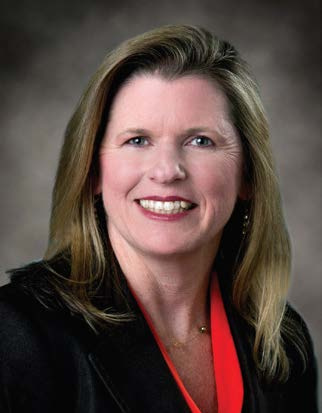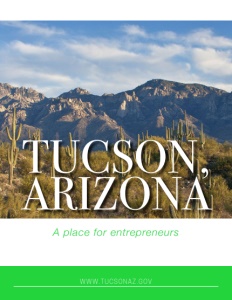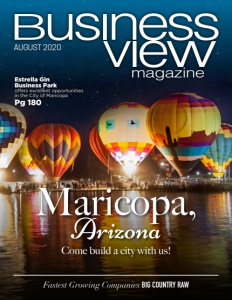Tucson, Arizona
A place for entrepreneurs
Business View Magazine interviews Barbra Coffee, Economic Initiatives Dir. for Tucson, Arizona, as part of our focus on best business practices of American cities.
Tucson is a city in, and the county seat of, Pima County, Arizona. It was originally founded in 1775 as a military fort by the Spanish, in an area near the Santa Cruz River that was part of Mexico after it gained independence from Spain in 1821. The U.S. acquired Arizona, south of the Gila River, via treaty from Mexico in the Gadsden Purchase on June 8, 1854. Under this treaty, Tucson became a part of the United States of America. It was incorporated in 1877, making it the oldest incorporated city in the territory. During the territorial and early statehood periods (Arizona became the 48th state in 1912), Tucson was Arizona’s largest city and commercial center, while Phoenix was the seat of state government and agriculture.
Much of Tucson’s modern economic development has been centered on the development of the University of Arizona (UA), originally founded in 1885, and which today, with approximately 46,000 students, is the largest employer in the city. Davis-Monthan Air Force Base, on the city’s southeastern edge, also provides many jobs for Tucson residents. Its presence, as well as the presence of the U.S. Army Intelligence Center at Fort Huachuca in nearby Sierra Vista, has led to the development of many high-tech defense and aerospace industries in the area, including: Raytheon Missile Systems, Texas Instruments, IBM, Intuit Inc., Universal Avionics, Honeywell Aerospace, Sunquest Information Systems, and Bombardier Aerospace.

Economic Initiatives Director, Barbra Coffee
In addition, roughly 150 Tucson companies are involved in the design and manufacture of optics and optoelectronics systems, earning Tucson the nickname “Optics Valley.” Much of this is due, in part, to the presence of the Steward Observatory at UA, which is one of a few locations in the world with the ability to cast the enormous mirrors used in telescopes for space exploration. The Optical Sciences Center (OSC) on the UA campus is considered a national asset for technical leadership in developing new technologies and applications for optics in the fields of data storage, medicine, manufacturing, telecommunications, and military guidance systems.
All in all, the Tucson region is fast becoming one of the nation’s most innovative business centers. In fact, it has the highest concentration of startups of any U.S. city its size and is ranked as a top-five city for entrepreneurs by Entrepreneur Magazine. “We’re hard at work fostering and developing our entrepreneurial ecosystem,” says Barbra Coffee, Economic Initiatives Director for the City of Tucson. “Another accolade we received is a CBRE (Coldwell Banker Richard Ellis) report that named us as one of the number one up-and-coming tech talent markets,” she adds.
An important piece of Tucson’s entrepreneurial ecosystem is Tech Parks Arizona, UA’s research campus affiliate that creates the environment and interactive ground that generates, attracts, and retains technology companies and talent in alignment with the research, mission, and goals of the university. “The UA Tech Park site at Rita Road is over 1,300 acres and home to 6,000 employees,” Coffee notes. “The exciting news is that the Tech Park is developing two more campus locations including one that’s closer to downtown which is under construction now.” According to Coffee, their first building is being developed by Boyer Company. It will be called The Refinery and will house research and development companies and the University of Arizona Center for Innovation. “When complete, The Bridges site will be home to a dynamic community of technology companies, recreational facilities, and high-quality retail and residential development,” says Coffee. “In addition, in Oro Valley, neighboring town to the north, the Tech Park is developing a life sciences research campus where Roche Pharmaceuticals is located.”
All of these entrepreneurial and research activities help make Tucson an attractive place for other companies looking to relocate. “It’s a live/work/play environment where people feel inspired,” Coffee proffers. “The University, alone, has now topped $700 million in annual research and development expenditures. When you think about the number of graduating engineers and programs, it’s no wonder that a company like TuSimple chooses to roll out their autonomous trucking programs in Tucson. They continue to expand, and we’re excited about the advancement of that technology and what it means for the future of transportation.”
Coffee adds that another part of Tucson’s entrepreneurial ecosystem is the partnerships that the city has fostered with many other entities and institutions. “We have organizations including Startup Tucson and associated venture capital groups like Desert Angels and UA Venture Capital that create a foundation for this ecosystem, something many cities work hard to try to build,” she points out. “What you see is great support and activity for the entrepreneurs who choose to stay, develop, and then commercialize their technologies here rather than following the funds that may lure them away to the Bay area or the East Coast. So, we’re making strides there. The Arizona Technology Council is another great organization that represents hundreds of businesses throughout the state, but has a strong presence in Tucson. It convenes these tech companies so that they are able to network, and collaborate, and grow stronger.”
“Also, our city and our county work very well together,” Coffee continues. “Pima County and the City of Tucson have teamed up on many occasions to help retain and recruit business. Last year, Raytheon expanded and added 1,900 new jobs; the city and the county worked together to acquire land to provide a buffer for their expansion and allow them to do what was needed. We want to do everything we can to keep companies here and help them grow so jobs are not lost. We have created ways to incentivize the growth of local industry so we can retain jobs and compete with other locations for expansion and relocation projects. We have a robust toolbox for attracting industry and part of that is having a mayor and council that understands the importance of job creation.”
One of the city’s tools is called the Primary Jobs Incentive Program; it provides up to a 100 percent reimbursement of construction sales tax to qualifying expenses, such as a project’s public infrastructure improvements, offsets to impact fees, and/or job-training. The City may also reimburse eligible building permit fees. Qualifying projects must: a) invest a minimum of $5 million in facilities or equipment; b) create 25 jobs that pay wages of at least $54,000; and c) cover at least 75 percent of employee health insurance premiums.
“The Primary Jobs Incentive has been important,” says Coffee. “Another important incentive, particularly as it relates to downtown, is our Government Property Lease Excise Tax (GPLET) Program and its eight-year tax abatement for projects that develop within our central business district. That’s where the city can provide property tax relief for projects that are making an investment in downtown.” To become “government property” the city will take ownership of the property for the duration that the owner wishes to be relieved of tax obligations.
“Throughout the city, we also have creatively used our Site Specific Sales Tax Incentive for large sales tax revenue generating projects. We’ve also expanded our Global Economic Development District (GEDD), to attract manufacturing and large logistics industries along our I-10 corridor. And when we’re thinking about attracting industry to Tucson, there’s also what I call ‘the California Factor.’ We know that when companies are looking at Tucson, they’re often thinking about either how to get as close to California without going in, or they’re trying to get out of California. In terms of the cost of doing business here in Tucson, it’s about 30 percent less than what it would be in California – whether it’s workers comp, utility rates, income taxes, etc. We are certainly a cost-effective solution when companies are trying to expand or relocate. We compete with Nevada, and sometimes southern Utah, when companies are looking for a western region location.

“Another key factor in distinguishing competitive advantages for Tucson is its proximity to Mexico. We are just an hour from the Nogales Port of Entry, and we see a lot of bi-national, bi-lingual, and bi-lateral opportunities here in our manufacturing, logistics, and warehousing sector. It’s not uncommon to see companies doing business on both sides of the border and taking advantage of what both Mexico and Arizona have to offer in terms of the low cost of doing business. We also recognize that time is money, so we help companies get open as quickly as possible. We try to make it as easy as possible for that to happen.”
While the COVID-19 pandemic has slowed some of the development projects slated for Tucson’s downtown, Coffee believes that the city is well-poised for recovery. “And that speaks to what was happening before the pandemic,” she explains. “Just in the last six to seven years, in particular, downtown Tucson has seen a resurgence, or renaissance, if you will, and there is still quite a bit of development going on in the center of our city. It started when our modern street car (Sun Link) came online. It connects the University of Arizona through our downtown government center and to the west side of I-10, an area called the Mercado. That transportation system has really been the driving force for a lot of our mixed-use development and the resurgence of office and entrepreneurial activity in downtown – helping us build up that daytime demographic that is so important. The impact of that transportation system can be seen in decisions by companies such as Hexagon Mining, bringing their headquarters to downtown Tucson, and Caterpillar building their new Global Mining Division facility for 700 employees on the western edge of the street car route.”
Downtown development also includes more residential and hotel/hospitality construction. “Right now, we have over a thousand residential units under construction downtown,” Coffee reports. “As a matter of fact, just this week, our first luxury, hi-rise housing development was completed, called the Rendezvous Urban Flats. They are now leasing. And we’re continuing to see similar projects following suit. Another new mixed-use project by Gadsden Development is bringing housing and retail to the Mercado District – they will be continuing to build out along the Santa Cruz River, creating a unique opportunity there, again along the streetcar line. HSL Properties is also opening the Flin Apartments – that is also downtown, and they’re planning a January 2021 opening. We’re a mid-size urban center that I think is going to be quite attractive as people choose where they want to live. Having these urban environments where people can be connected and still have access to our Tier One research university will continue to drive the entrepreneurial activity and job creation.
“The trend with hospitality in downtown is also strong. Our convention center also sits along the street car route, right in downtown, and it’s undergoing a $65 million renovation. Our first connected hotel to the convention center is under construction – a Double Tree brand. For a city our size – population over 530,000 – not having a convention center with a connected hotel is unusual, so we’re glad to be increasing our ability to attract meetings, when, in fact, we can meet again. So, we’re looking forward, hopefully, to that business returning when the pandemic is somewhat under control.
“We have another group out of Dallas – Fayth Hospitality – building a dual-branded, limited-service hotel offering. We have other hotels slated for renovation, with demolition on one just started this summer. HSL is redeveloping what was formerly the Hotel Arizona; it’s been sitting dark and vacant in downtown for almost a decade. That’s an exciting opportunity. It flanks the convention center, as well, so it will be another walkable hotel space. This project will bear a Hyatt Regency flag and include a spa and wellness component. It’s a $41 million project with 296 rooms. Seeing that kind of investment still moving forward is a great sign for us. Tucson was on this trajectory and the pandemic has not really halted construction.”
Other sectors in Tucson are also on the rise. “We’re seeing a resurgence of health care, as well,” Coffee adds. “Northwest Hospital has come into the market, recently, and we’ve seen major expansions at Banner Medical. So, with the research and programs at UA, I think that we’ll continue to see that sector grow. We’ve also tried to maximize the federal Opportunity Zone designations. We have quite a few census tracts that are eligible, and we’ve seen some developments, in particular, multi-family and hospitality projects that have taken root in some of our Opportunity Zone areas. There’s also the growth by Tucson International Airport. We are thrilled to be able to have room for expansion there, where aviation and aerospace companies locate in and around the airport. We have aggressive economic development strategies promoting that activity as well.”
“We really are a place for entrepreneurs,” Coffee states in conclusion. “It’s because we’re a city that is authentic. We’re ripe with arts, culture and history, and we didn’t have to recreate it. It’s what Tucson has always been known for. All those things create a place that attracts, and it’s why we’ve seen this resurgence in our downtown area and throughout our city.”
AT A GLANCE
WHO: Tucson, Arizona
WHAT: A city of 546,000
WHERE: In Pima County in south-central Arizona
WEBSITE: www.tucsonaz.gov
PREFERRED VENDORS
Diamond Ventures – www.diamondventures.com
Diamond Ventures, founded in 1988, is a leading real estate development and investment company in Arizona. Over the years, the company has achieved its vision by developing quality residential, commercial, industrial and build-to-suit projects. We are mission driven to provide high quality real estate investments and business ventures that create value for our partners and customers through successful collaboration, careful consideration for the community and attention to business details. Please reach out to us through diamondventures.com!
Tech Parks Arizona – techparks.arizona.edu
The UA Tech Park at The Bridges is just minutes away from the University of Arizona, Downtown Tucson, interstate interchange, and the Tucson International Airport. The first building, named The Refinery, will be ready for occupancy the summer of 2021. This four-story, 120,000 square-foot office building is ideal for tech-focused businesses and organizations.








